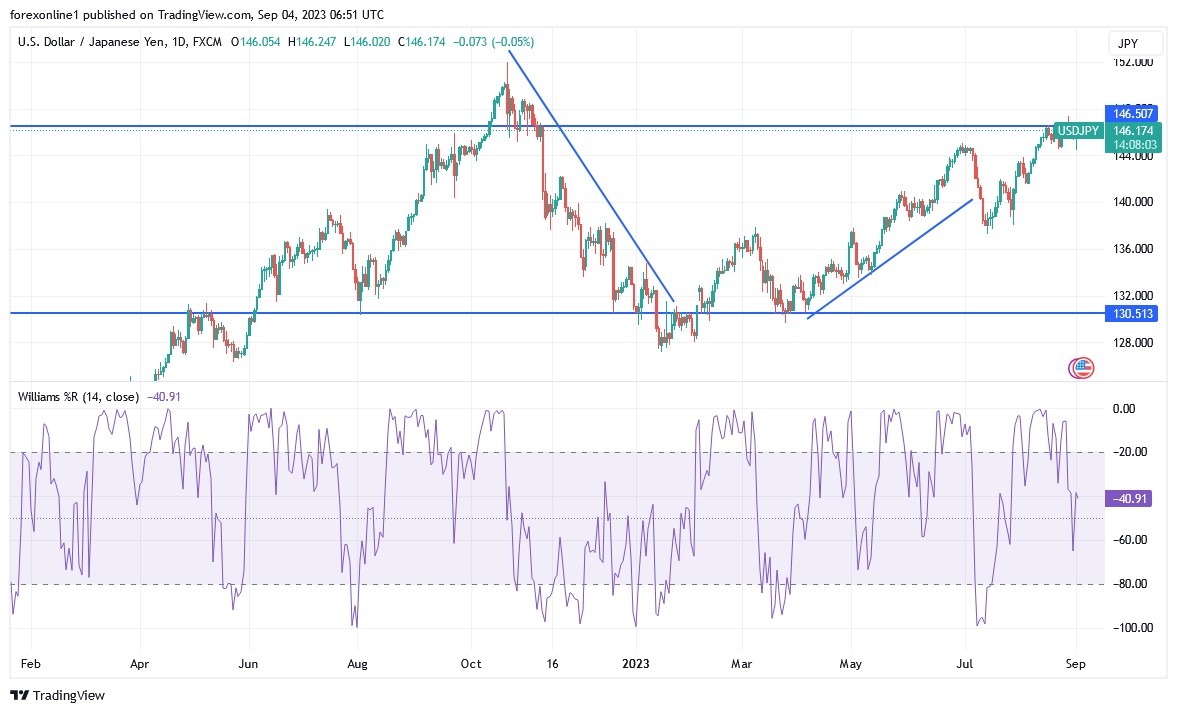The recent selling operations failed to turn the general trend of the USD/JPY currency pair downward. The bulls' control continued as it closed higher around the resistance level of 146.30. The selling operations pushed it in the same week to the support level of 144.44. The difference between the policy of the strict American Federal Reserve Bank and the Bank of Japan, has an accommodative policy with exclusively negative interest rates, contrary to the policies of other global central banks.
Top Forex Brokers
The general trend of the USD/JPY currency pair will remain upward until Japanese intervention in the markets to prevent further collapse of the price of the Japanese yen against the rest of the other major currencies. The Japanese intervention will be at any time and without warning.
US inflation slowed even as the labor market remained resilient, bolstering the argument that the Federal Reserve is capable of smoothing the economy. Accordingly, the US central bank's preferred core inflation measure has recorded the smallest consecutive increases since late 2020, encouraging an increase in consumer spending. A separate report showed employers added more jobs than expected in August while wage growth slowed.
The core personal consumption expenditure price index, which excludes volatile food and energy components, rose 0.2% in July for the second month. The low inflation numbers confirm the progress made by the Federal Reserve Bank over the past year in taming price pressures.
The latest US jobs data showed that the labor market is going through a phase of controlled calm, which is evident from the strong employment and the slowdown in wage growth and the return of more people to the workforce. Employers added 187,000 jobs in August in a broad-based advance, following downward revisions to payrolls in the previous two months.
In Japan, the Gibbon Manufacturing PMI for August missed the expected reading of 49.7 with a slightly lower reading of 49.6. Earlier in the week, capital spending for the second quarter also fell short of the expected 5.4% change with a 4.5% change recorded. Housing starts for the month of July exceeded the expected change (on an annual basis) by -0.8% with a change of -6.7%, while retail trade exceeded expectations (on an annual basis) of 5.4% with a change of 6.8%.
Technical analysis of the dollar pair against the Japanese yen:
- The USD/JPY currency pair is still a few levels below the 100-hour moving average despite the rebound.
- As a result, the currency pair still has room to rise before reaching overbought RSI levels on the 14-hour window.
- In the near term and according to the performance on the hourly chart, it seems that the USD/JPY currency pair is trading within a bearish channel.
- The MACD indicator on the hourly chart appears to be about to initiate a bullish cross, indicating a potential reversal.
Therefore the bulls will target short-term profits at around 146.20 or higher at the 146.70 resistance. On the other hand, the bearish speculators will look to pounce on profits at around 145.12 or below at the 144.67 support.
In the long term and according to the performance on the daily chart, it seems that the USD/JPY currency pair is about to complete the downward breakthrough from the formation of the ascending channel. It also looks like the daily MACD is about to start a bearish crossover, indicating a change in market sentiment from bullish to bearish. Therefore, the bearish speculators will target extended pullbacks at around 144.06 or lower at the 142.58 support. On the other hand, the bulls will look to pounce on profits at around 147.50 or higher at the 148.75 resistance.
Ready to trade our Forex daily forecast? We’ve shortlisted the best currency trading platforms in the industry for you

